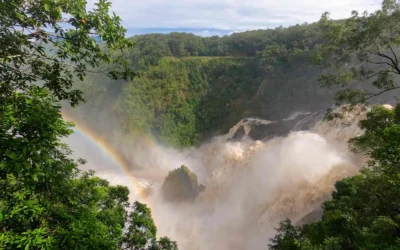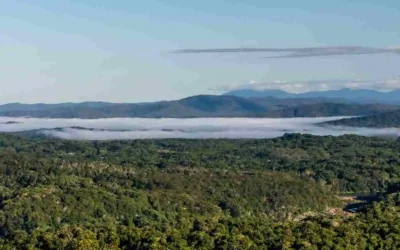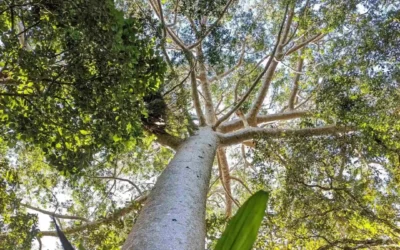Calling all rainforest frog fans!
Some of the oldest species of rainforest frogs can be found making a home in the Ancient Rainforest and some species date back to the Jurassic Period, over 200 million years!
Deep in the lush rainforest of the Wet Tropics World Heritage area of Cairns, Tropical North Queensland there is an abundance of biodiversity. A living museum of plants and animals from millions of years ago, some surviving major shifts through evolution, one of those animals are… frogs!
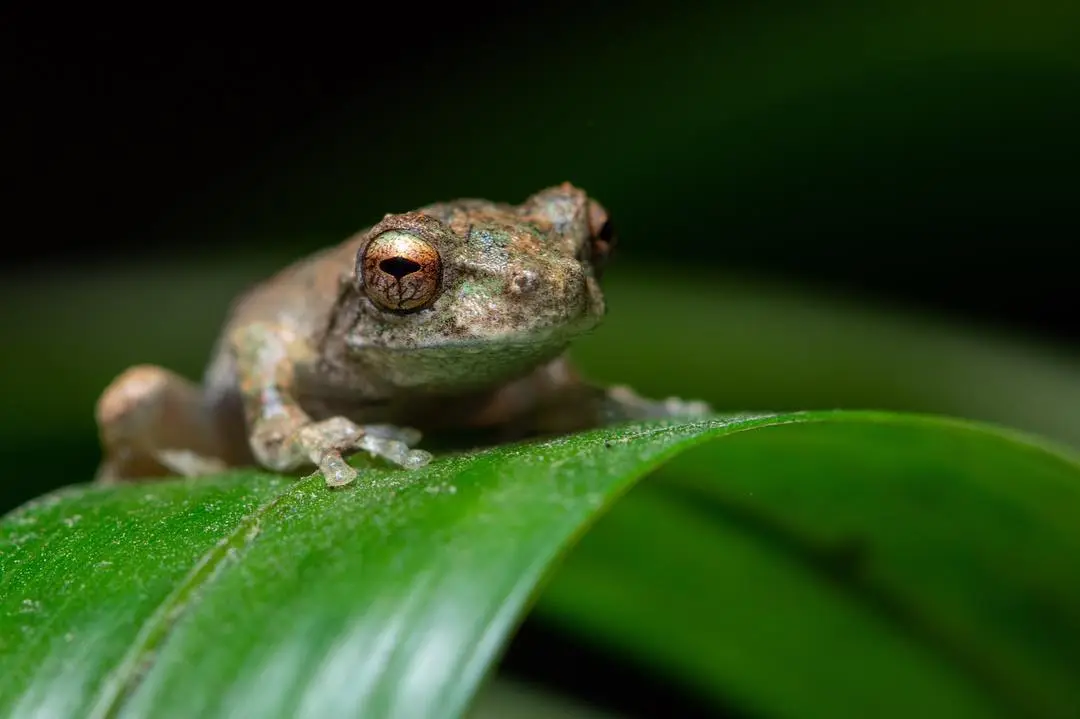
Kuranda Tree Frog (Ranoidea myola) 📸 Tim Hackwood
The Wet Tropics has the highest diversity of rainforest frogs in Australia, with over 54 frog species, 21 of which are endemic and found nowhere else on Earth! It is an important reminder of the biological and ecological significance of this ancient rainforest and the region.
Within the Wet Tropics there is a small, captivating amphibian resident which is endemic to this rainforest, the Kuranda Tree Frog. Found in the lower sections of streams entering the Barron River between the localities of Kuranda, Myola and Kowrowa.
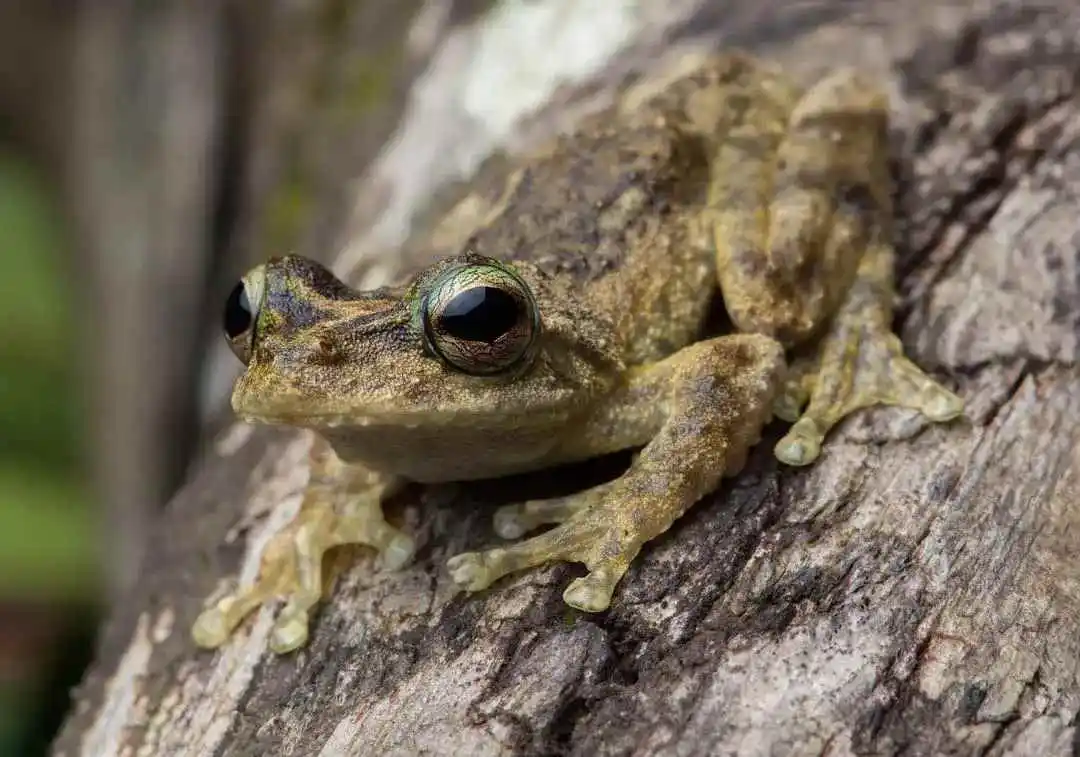
Kuranda Tree Frog (Ranoidea myola) 📸 Tim Hackwood
The Kuranda Tree Frog (Ranoidea myola), is a small amphibian usually measuring between 2.5-3.5 centimeters in length. Quite vibrant in colour with a striking green hue, ranging from lime green to darker emerald green shades, with black spots. These distinct color patterns provide effective camouflage within the cool, moist rainforest undergrowth.
The Kuranda Tree frog is like most other species of rainforest frogs, it undergoes a metamorphosis from egg to tadpole then into froglets- a miniature version of their adult selves. A nocturnal frog which likes spending most of their lives perched on the branches and leaves of trees in the rainforest canopy and becoming more active at dusk. Their adhesive toe pads enable them to easily climb and cling to vegetation with ease.
A unique feature of the Kuranda Tree Frog is their calls, they are quite distinct with a high pitched ‘wraak wraak’ sound, repeated several times in a rhythmic pattern. These calls are used to communicate but also to attract females during mating rituals. An interesting fact about these special frogs is the males exhibit a unique behavior known as ‘lecking’. Lecking is where males gather in a group to compete for female attention showcasing their vibrant colours and loud mating call during breeding season, November to April.
The Kuranda Tree Frog is considered a critically endangered species, its limited distribution makes it particularly vulnerable, but there are efforts underway with ongoing research to protect and conserve the Kuranda Tree Frog’s population from declining further.
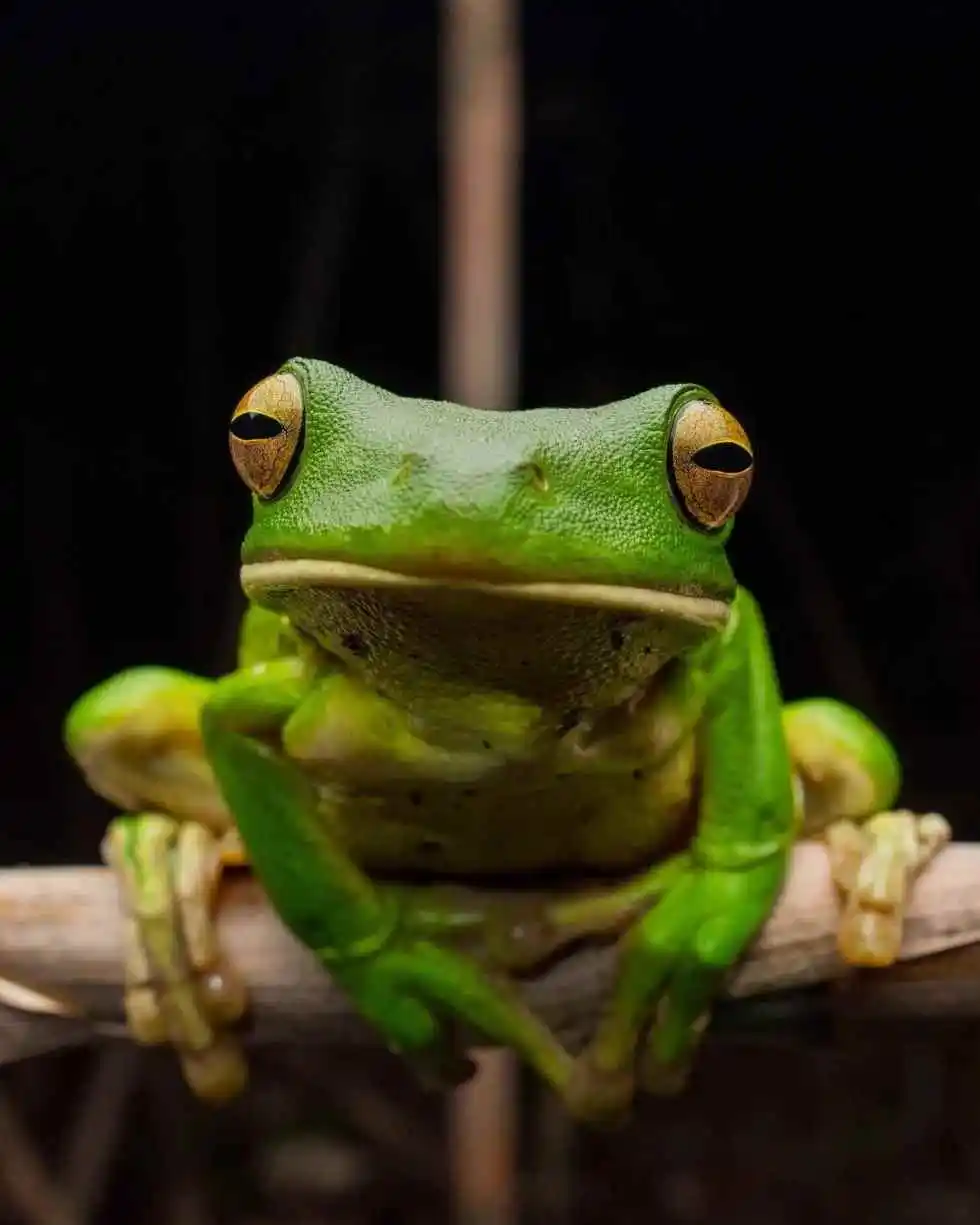
White-lipped Tree Frog ( Litoria infrafrenata) 📸 Tim Hackwood
One of the most common species of rainforest frog is the White-lipped Tree Frog (Litoria infrafrenata). Easily identified by its green body, white bottom lip and bright white underbelly. It is also one of Australia’s largest frogs, growing up to 13.5cm! There is a distinct white stripe along the lower lip that extends to the shoulder. The belly is white, and the male has a green throat. The pupil is horizontal, and the iris is gold. Found in Cape York region, the Wet Tropics and further south around Airlie Beach and Proserpine. If you live in suburban tropical Australia, you will have surely seen one of these friendly fellows!
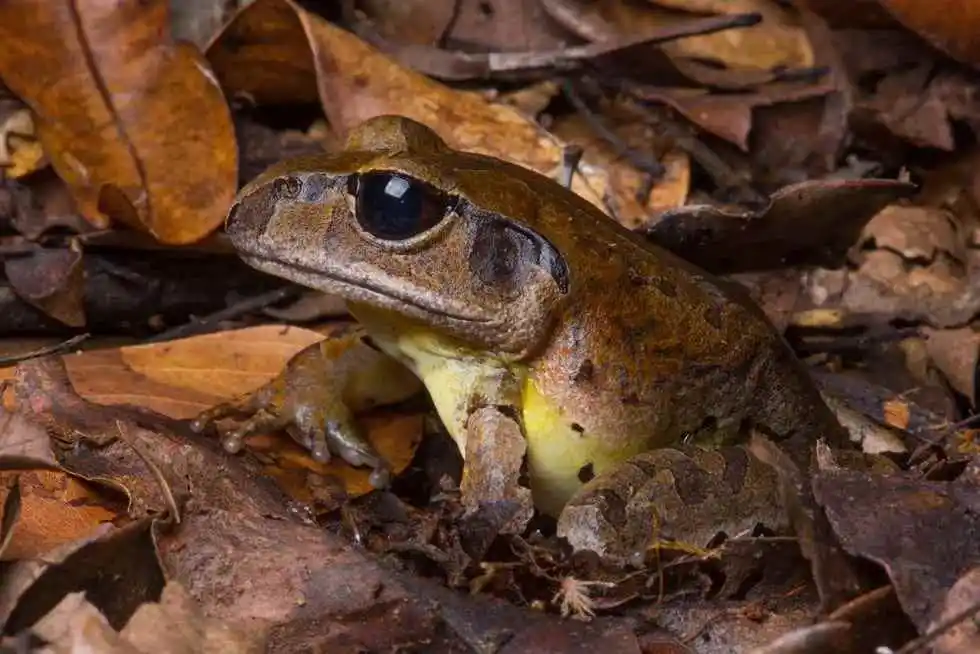
Northern Barred Frog (Mixophyes schevilli) 📸 Tim Hackwood
Another rainforest frog you are likely to hear when exploring the rainforest is the Northern Barred Frog (Mixophyes schevilli). Found only in the Wet Tropics of North Queensland, this frog spends most of its time on the rainforest floor near streams. Its light brown skin and dark spots help with camouflage against predators. While the Northern Bard Frog can grow up to 9cm in length, the tadpoles can grow for two years and up to an impressive 10.5cm, making them Australia’s biggest and longest-living tadpoles!
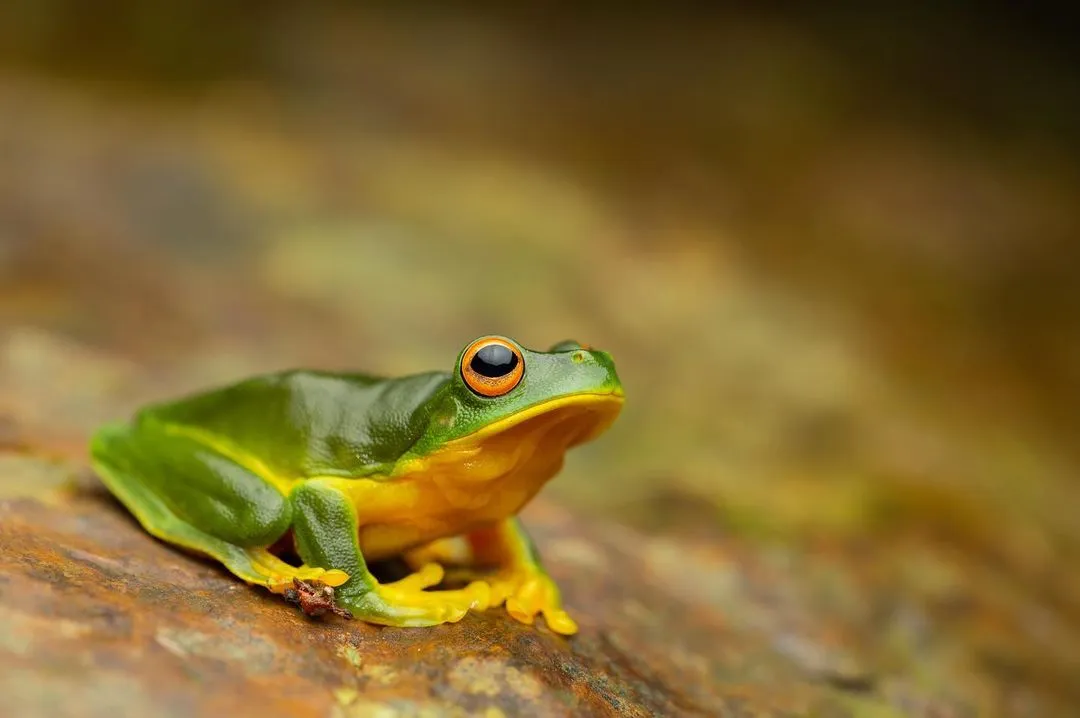
Orange-thighed Tree Frog (Litoria xanthomera) 📸 Tim Hackwood
A striking little frog of the Wet Tropics is the Orange-thighed Tree Frog (Litoria xanthomera). While most frogs in the rainforest are heard rather than seen, the small Orange-thighed Tree Frog is an impressive sight if you are ever lucky enough to spot one. A large species of frog reaching up to 8.5cm in length. With bright red-orange eyes, deep orange flanks and limbs, and a bright yellow vocal sac, the Orange-thighed Tree Frog leaps through the rainforest as a vibrant pop of colour.
So, keep your eyes and ears tuned into the ancient rainforest when you next visit with Skyrail, and don’t forget to ask one of our Rainforest Rangers at Red Peak during a complimentary Guided Tour about their favourite frog!
Did you know Skyrail has a foundation which helps supports tropical rainforest research worldwide?
This includes frogs!
The Skyrail Rainforest Foundation is committed to establishing, conducting and supporting tropical rainforest research programmes.
Congratulations to the below students who received funding from the Skyrail Rainforest Foundation 2022/2023 who are studying frog species, their environments and making efforts for future frog conservation and management.
James Cook University PhD Student Jordy Groffen received funding to support his research into parental care behaviour and breeding microhabitats to protect Nursery frog nests from rising temperatures.
James Cook University PhD student Emma Carmichael received funding to assist her research in the ecology and conservation of threatened mountaintop Nursery Frogs in the Wet Tropics.
James Cook University PhD student Emily Rush received funding to support her research into the Distribution, ecology and conservation of the Magnificent Broodfrog (Pseudophryne covacevichae) in the mountains of north Queensland.
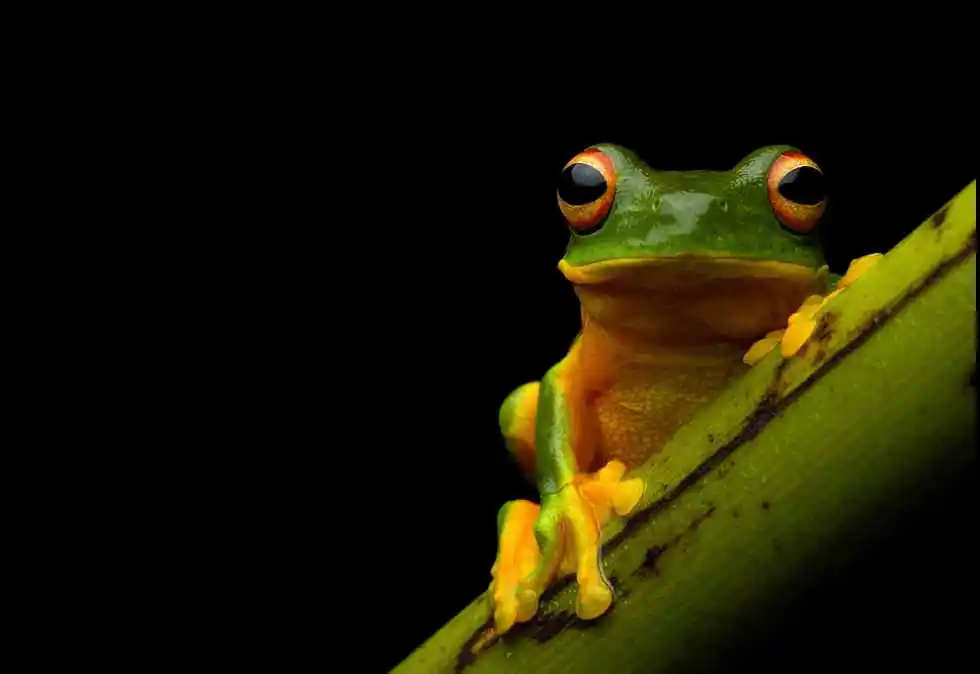
Orange-thighed Tree Frog (Litoria xanthomera) 📸 Tim Hackwood
Want to help support the tropical rainforest… or frogs?
Become a member, or make a donation with the Skyrail Rainforest Foundation and support tropical rainforest education, regeneration, and conservation worldwide. Members collect benefits across several Cairns tourism partners, such as Quicksilver Cruises, Kuranda Scenic Railway, Big Cat Green Island Cruises, Wildlife TNQ and Passions of Paradise.

